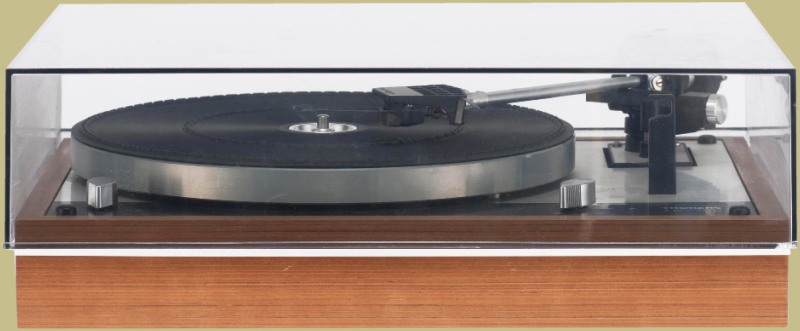
The Thorens TD-160 turntable was introduced by Thorens in 1972 to replace the TD-150. It’s one of the classic turntables of its era and is still very popular today. Thorens produced the TD-160 for a number of years and it was their best seller for quite some time. It was discontinued in 1988 but various versions of it such as the such as Super, MKII and BC2 were made into the 1990s. The TD-160 was produced in Switzerland for awhile and then production moved to Germany. Thorens also made the TD-165 which was a lower priced version of the TD-160.
The TD-160 is a beautiful turntable with sleek and understated aesthetics. It is simply and elegantly designed with a modernist look based upon the Bauhaus school of design. Since it only has controls for speed and tonearm queuing the top is uncluttered. The top plate is two-toned steel gray and black with the tear drop shaped control knobs contrasting the black portion. A metal strip running along the front of the teak veneered plinth acts as both a decorative piece as well as a rest for the dust cover.
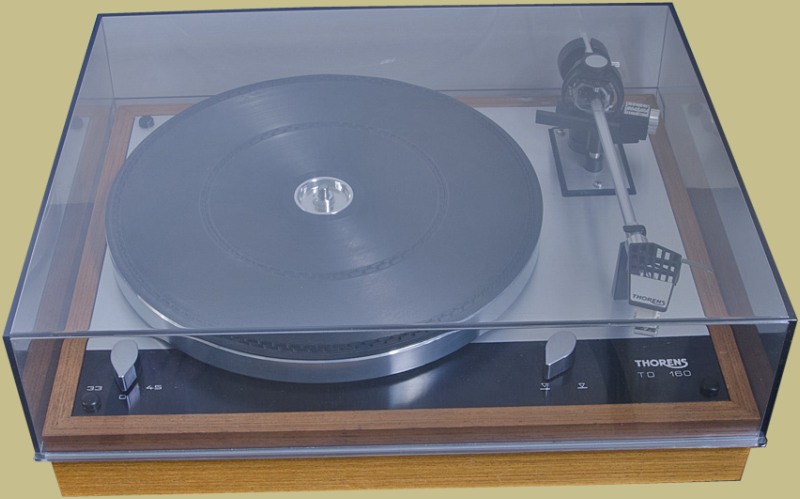
The TD-160 is a manual, belt-drive, two-speed (33 and 45) turntable. Like its predecessor the TD-150, it has a floating sub-chassis suspended by three adjustable springs, and a synchronous, 16-pole AC motor.
While the TD-160 is a manual table it does have a cueing mechanism. The cueing control knob is connected via cable to the tonearm lift thereby allowing the user to raise or drop the tonearm via the control.
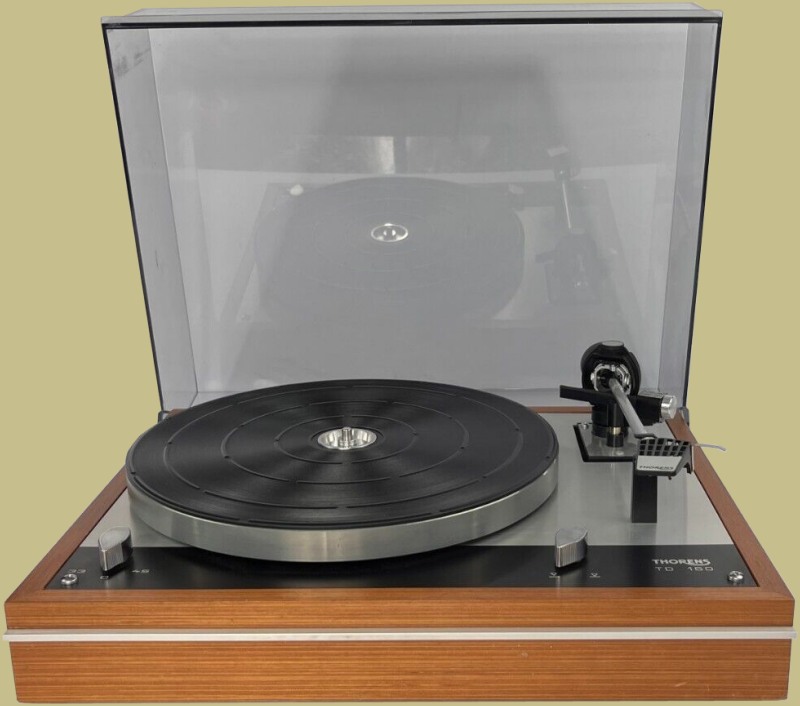
Specifications
- Drive system: Electronicslly controlled, 16-pole synchronous motor with belt drive
- Record speeds: 33⅓ and 45 rpm
- Turntable platter: Non-magnetic zinc alloy, 12″, 7 lbs
- Wow and flutter: 0.06% (weighted)
- Rumble (DIN 45539): -48 dB (unweighted), -68dB (weighted)
- Power requirements: 110 -130 volts AC, 220 – 240 volts AC, 15 watts 50/60 Hz
- Dimensions: 17″ (L) x 13½”(W) x 7¾”(H)
- Net weight: 18 lbs
- Tonearm: TP-16
- Length: 9.06″ (between stylus tip and vertical tonearm bearing)
- Stylus overhang: 0.55″ adjustable
- Lateral tracking error: less than 0.2% cm of radius
- Bearing Friction: Less than 20 mg in vertical and horizontal planes, measured at stylus tip
The TD-160 has a 7 pound, die-cast zinc platter riding on a 10mm bearing.
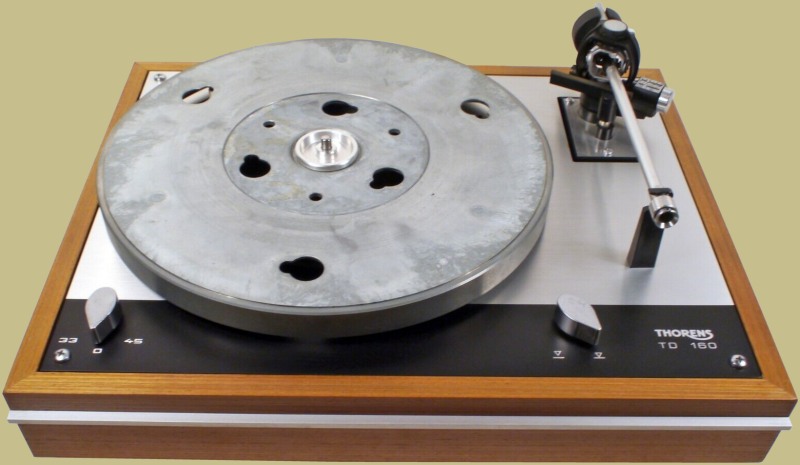
Tonearm
The TD-160 came with the TP-16 tonearm and the plug-in, magnesium head shell was a Thorens TP-60. While the TP-16 is a good performing tonearm it has its deficiencies. At the time of production heavier tonearms were common, but later low mass (low compliance) tonearms became more popular and cartridge manufacturers focused on producing cartridges for those tonearms. This meant fewer cartridge choices for TP16 owners. You might occasionally see a TD-160 BC model which was the TD-160 but without a tonearm. It also had a blank tonearm board, and no lift/lower mechanism. It was made for those who wanted to choose their own tonearm for the TD-160. Many used the SME tonearms of the day.
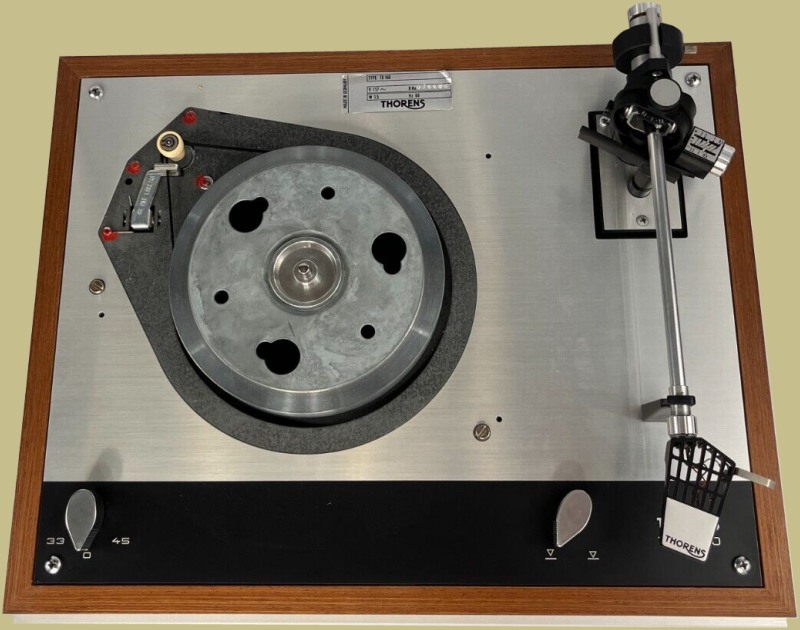
The TP-16 is actually a very good tonearm. Some feel that after rewiring the TP-16 it can perform as well as any replacement might, and may be the single most important sonic upgrade that can be made to a TD-160 with the TP-16. There is a guide on rewiring the TP-16 tonearm on Vinyl Engine which can be found HERE.
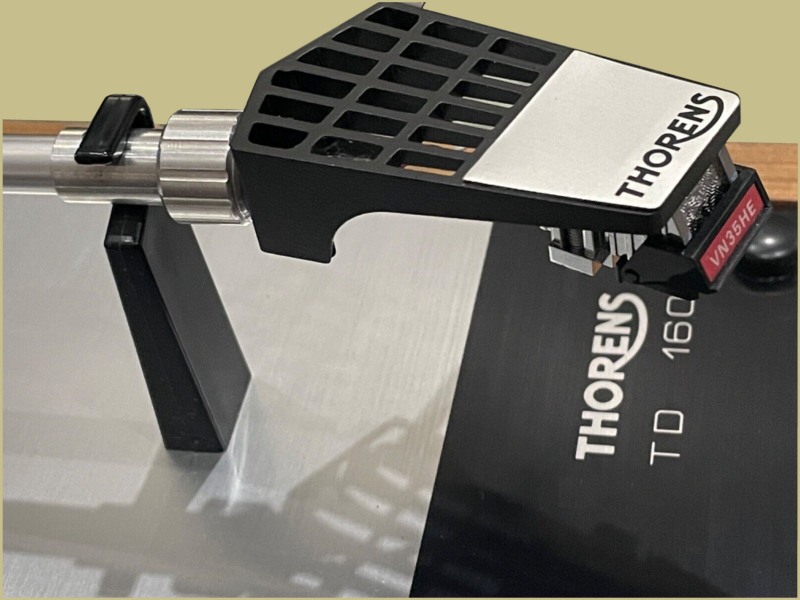
Customization
The TD-160 is a great turntable in its original configuration. But, one prominent feature of this model is its remarkable adaptability, allowing for modifications, enhancements, and adjustments.
Numerous different tonearms can be tried, whether straight or curved. The suspension springs can be entirely replaced or adjusted for optimal vibration dampening, resulting in an overall smoother performance.
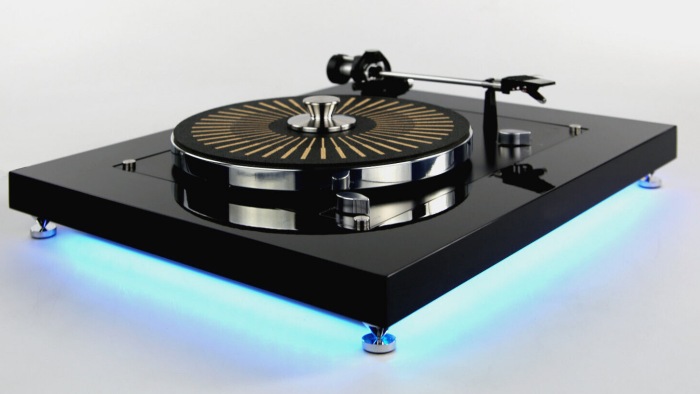
One of the most common modifications is building a custom plinth to enhance isolation. Some build plinths to add a customized look to the TD-160 too. Another popular modification entails replacing or swapping cartridge head shells or styli, be it for moving magnet (MM), moving coil (MC), or mono cartridges. Such replacements can be easily accomplished, offering improved sonic qualities.
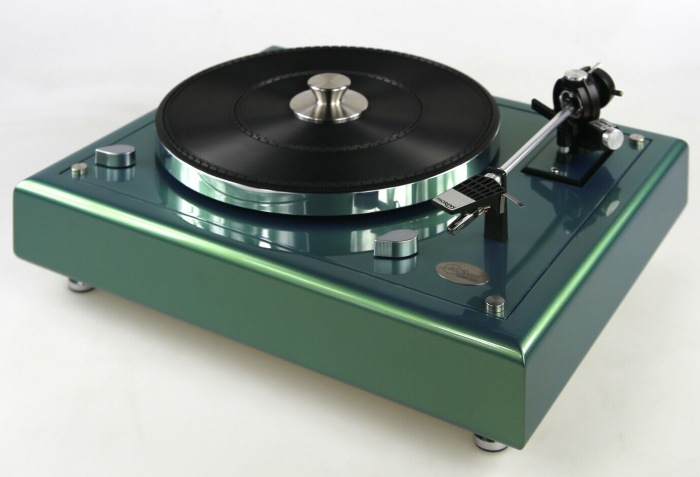
Some of the customized TD-160 are beautiful. You can find more if them HERE.
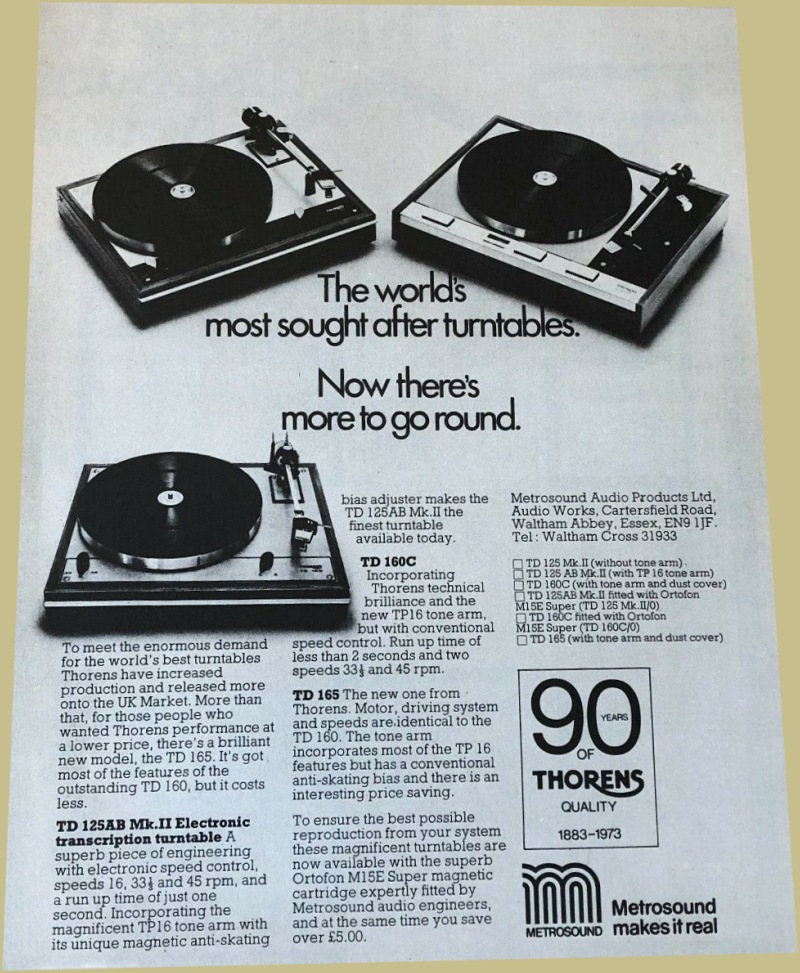
Models:
- TD 160 1972 – 1976
- TD-160 BC no tonearm
- TD-160 Mk II
- TD 160 Super 1982 **
- TD 160 II 1976 – 1984
- TD 160 S Mk IV 1987 – 1988 ***
- TD 160 S Mk V 1988
** the TD160 Super was based on the TD160 Mk II chassis.
*** the TD160 S Mk IV and V were successors to the TD147 with auto-lift and shut-off capabilities. Not to be confused with the TD160 Super.
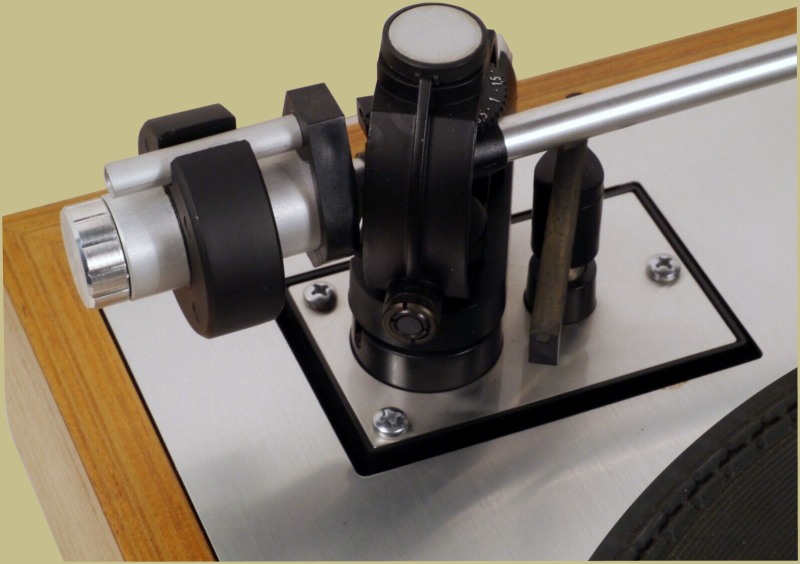
TD-160 Super
In the early 1980s, Thorens introduced the TD 160 Super, catering specifically to devoted audiophiles seeking unparalleled sound quality. While bearing similarities to the TD 160 Mk II in terms of technical aspects, this version had some noteworthy enhancements. These included a larger platter bearing with a 10 mm diameter, a more robust and spacious cabinet constructed from MDF instead of chipboard, and a sub-chassis featuring specialized vibration damping. Additionally, the standard platter mat was substituted with a resonance-absorbing alternative. Notably, the turntable was initially sold without a tonearm, but its owner could select from a wide range of tonearms (measuring 9″) due to the provision of different tonearm bases.
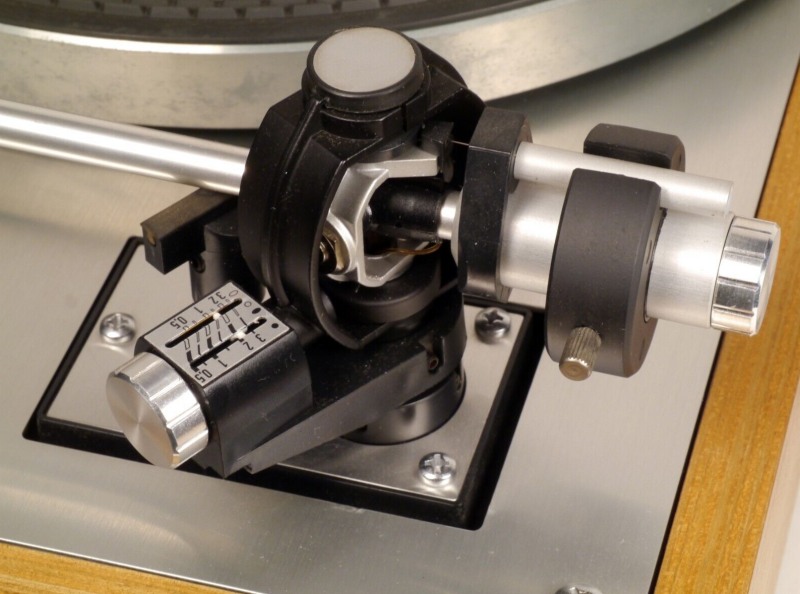
Lineage of the TD-160 Turntable
In 1972 Thorens introduced the TD160 as a more affordable yet high-quality Hi-Fi player, replacing the TD150. It featured a similar 3-point suspension floating sub-chassis but came with the new TP16 tonearm. The operation was completely manual, but it included an integrated cable-operated tonearm cue. Like its predecessor, the TD160 used a synchronous 16 pole 2-phase AC motor, which achieved pitch precision by synchronizing with the mains frequency, similar to electric clock motors of that time. Both the TD125 MkII and TD160 shared a 7-pound die-cast zinc platter and a 10mm platter bearing.
At the same time, Thorens offered a less expensive option, the TD165, with the TP11 tonearm. This tonearm retained the gimbal pivot bearing, arm tube, and head shell from the TP16 but featured a weight-on-string style of anti-skate control and a different counterweight. The TD165 used a 7mm diameter platter bearing attached to a resin inner platter. The motor and pulley design also differed from the TD160.
In 1975 Thorens introduced the TD145, which essentially had the same features as the TD160 but included automated arm lift and motor stop at the end of play.
In 1976 a new tonearm called the “Isotrack” was introduced, designed with a low effective mass. It was an updated version of the TP16 tonearm, featuring removable “arm wands” fixed near the pivot bearing using a collar lock. By moving the coupling joint closer to the pivot, the effective mass was significantly reduced. The replaceable arm-wand for this tonearm was known as the TP62. A later version, the TP16-III, used a different style of arm-wand called the TP63. Both tonearms had an effective mass rating of 7.5 grams and were suitable for use with phono cartridges featuring high compliance suspensions.
Optional arm-wands were available for the Isotrack tonearms, integrating phono cartridges. Examples of such arm-wands were the TPO63 and TPO70. In collaboration with EMT, Thorens produced special moving-coil cartridges. They also introduced integrated arm-wand-cartridges such as the TMC63/TMC70, as well as phono cartridges named MCHI and MCHII, along with the PPA990 and STA960 (pre-preamplifier and step-up transformer).
In 1976 Thorens introduced the TD160 Mk II, featuring the TP16 Mk II (Isotrack) tonearm, the TD166 with the TP16 Mk II (Isotrack) tonearm and the TD145 Mk II with the TP16 Mk II (Isotrack) tonearm.
In 1982 Thorens unveiled the upgraded TD166 Mk II and the TD147.
In 1982 they also introduced the TD 160 Super, essentially a standard TD160 Mk II but with added features such as a larger and sturdier cabinet, damping material applied to the motor plate and sub-chassis pan, a heavier cabinet bottom plate, and it was typically delivered without a tonearm but occasionally included the TP16 Mk III (Isotrack) tonearm. The dustcover featured more substantial steel hinges.
In 1983 the TD146 was introduced as a semi-automatic variant of the TD166 and the TD147 Jubilee, celebrating Thorens’ centennial anniversary was also brought to market.
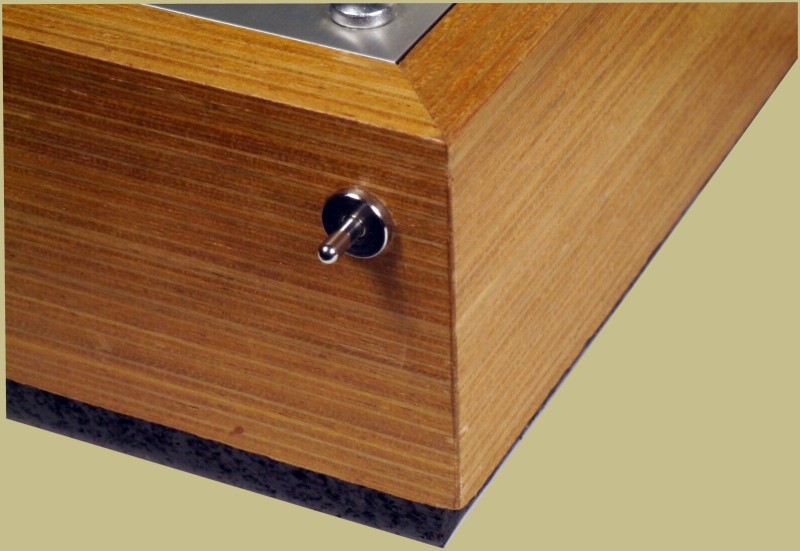
Issues
There aren’t really too many issues with the TD-160. The plinth tends to fade and/or chip over the years.
The dust cover hinges can snap as well. Replacements are fairly easily found. There are also metal versions of the hinges as well as repair kits that can be purchased on eBay HERE.
Other parts are also available on eBay such as:
Because so many TD-160 turntables were made over its lifetime there are plenty of them available today. That means that finding parts for them is not a problem. The simplicity of their build makes them easy to work on as well.
Here you can see the three spring suspension of the TD-160. Since the tonearm and platter are coupled to suspended sub-chassis they are structurally independent of the plinth which greatly reduces any possible feedback.
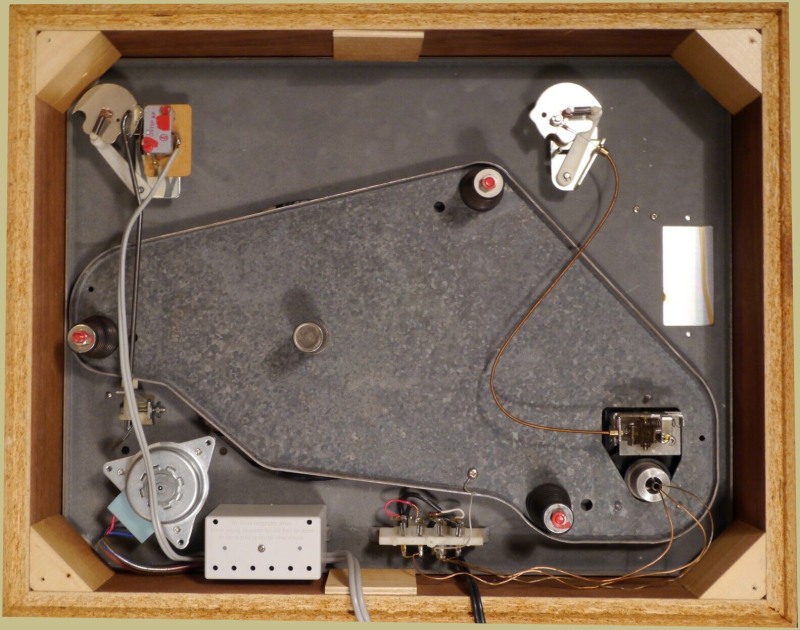
Many TD-160 owners modify the output and power cable connections. By mounting a steel plate on the back of the plinth the original hard wired connections can be changed to pluggable allowing different cable to be used.
The distinctive features that make the TD-160 stand out among other turntables are:
- A belt-driven system that reduces noise and vibration.
- A floating sub-chassis that is suspended by three adjustable springs and isolates the platter, tonearm and motor from external interference.
- A 16-pole synchronous motor that provides stable speed and low wow and flutter.
- A metal bodywork that improves sonic clarity and rigidity.
- A simple design that allows easy modification and customization with different plinths, arms, cartridges and motors.
Thorens utilized exceptional build quality in the TD-160 and, properly maintained will last as long as long or longer than its user.
Should You Buy a TD-160
The TD-160 underwent careful design considerations to ensure stability and performance. Its sleek and understated aesthetics, characterized by minimalist design exude elegance. As a result, it garners respect as an prominent element in any hi-fi setup. There are many reasons to buy one.
- It performs excellently.
- It looks great.
- It can be modified to look and perform even better.
- You can keep the original vintage look or go for a more modern altered look with a new plinth.
- You can tinker with different tonearms, feet and dampening materials.
- You can just buy it, hook it up, and play records.
- Parts are easily obtained.
- You can be sure it will hold its value as an iconic turntable.
What more can you ask for in a turntable? Sure, it’s simply built with minimal features, but it does exactly what a good turntable should do without any fuss. You can’t ask for more than that.
If you’re looking for the most extensive source of information on the TD-160 then try TheAnalogDepot.

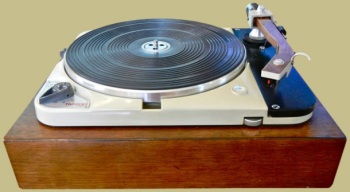
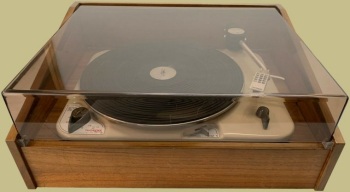
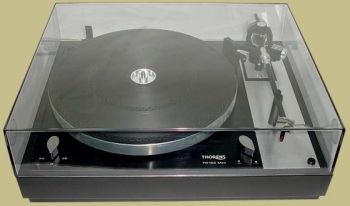
Olá tenho um THORENS vintage impecável 166 gostaria de saber se posso usar algum peso de disco clamp , visto ser um Gira discos de suspensão.Obrigado